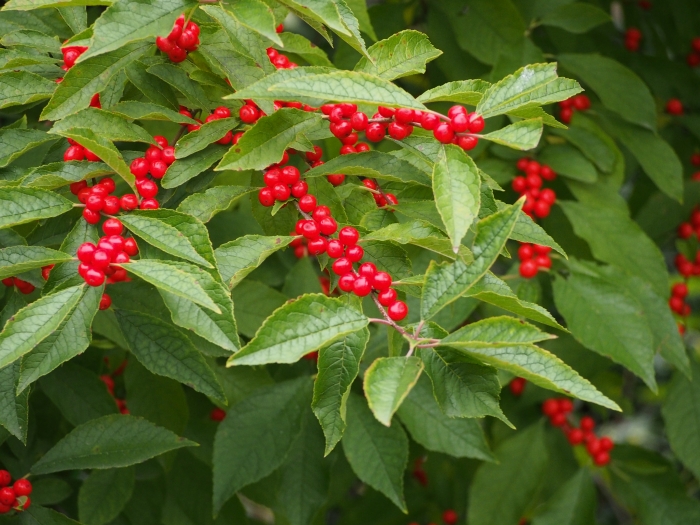Common Winterberry
(Ilex verticillata)
Common Winterberry (Ilex verticillata)
/
/

Agnieszka Kwiecień, Nova
CC BY-SA 4.0












































































Estimated Native Range
Summary
Common Winterberry is valued for its ornamental berries, which are highly visible after leaf drop and add a splash of color to the winter landscape. It is a popular choice for naturalistic plantings and as a source of cut branches for floral arrangements. The plant is easy to grow, with few disease or pest issues. It thrives in acidic, consistently moist soils but is adaptable to average garden conditions. A mix of male and female plants is necessary for fruit production, with matching bloom times for successful pollination. Cultivation requires full sun to part shade, ample water, and soil with medium to slow drainage. Popular cultivars offer variations in plant size, berry color, and growth habit.CC BY-SA 4.0
Plant Description
- Plant Type: Shrub
- Height: 6-12 feet
- Width: 3-12 feet
- Growth Rate: Moderate
- Flower Color: N/A
- Flowering Season: Spring
- Leaf Retention: Deciduous
Growth Requirements
- Sun: Full Sun, Part Shade
- Water: Medium
- Drainage: Medium
Common Uses
Bank Stabilization, Bee Garden, Bird Garden, Border Plant, Butterfly Garden, Deer Resistant, Erosion Control, Hedges, Low Maintenance, Street Planting, Water Garden
Natural Habitat
Swampy woods, wetlands, and along streams and ponds
Other Names
Common Names: Virginia Winterberry , Black Holly , Black-Alder , Winterberry , Black Alder , Canada Holly , Coralberry , Fever Bush , Michigan Holly , Houx Verticillé
Scientific Names: Ilex verticillata , Ilex fastigiata , Ilex verticillata var. padifolia , Ilex verticillata var. tenuifolia , Prinos verticillatus , Ilex verticillata var. verticillata , Ilex bronxensis , Ilex verticillata var. fastigiata , Ilex verticillata var. cyclophylla , Ilex verticillata f. chrysocarpa
GBIF Accepted Name: Ilex verticillata (L.) A.Gray